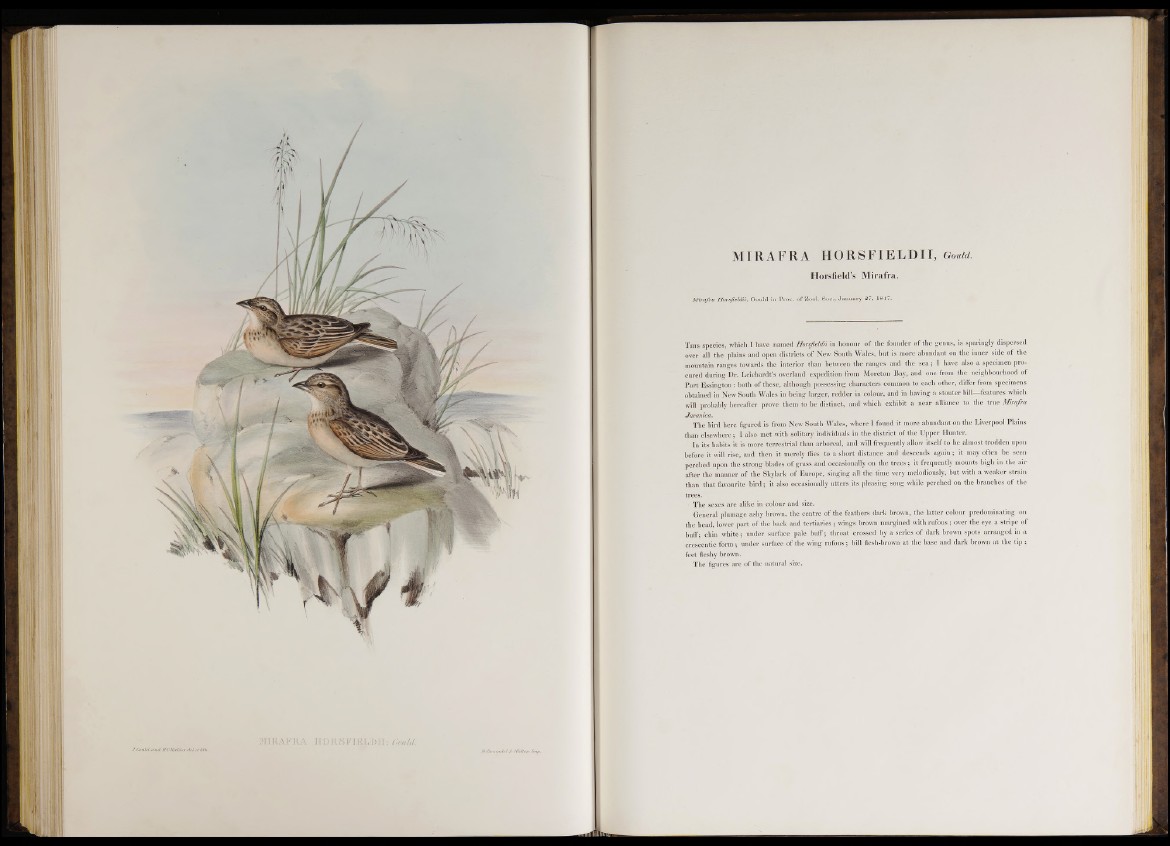
MIRAFRA HORSFIELDII, Gould.
Horsfield’s Mirafra.
Mirafra Horsfieldii, Gould in Proc. of Zool. Soc., January 27, 1847.
T h i s species, which I have named Horsfieldii in honour o f the founder o f the genus, is sparingly dispersed
over all the plains and open districts o f New South Wales, but is more abundant on the inner side o f the
mountain ranges towards the interior than between the ranges and the s e a ; I have also a specimen procured
during Dr. Leichardt’s overland expedition from Moreton Bay, and one from the neighbourhood of
P o rt Essington: both of these, although possessing characters common to each other, differ from specimens
obtained in New South Wales in being larger, redder in colour, and in having a stouter bill features which
will probably hereafter prove them to he distinct, and which exhibit a near alliance to the true Mirafra
Javanica.
The bird here figured is from New South Wales, where I found it more abundant on the Liverpool Plains
than elsewhere; I also met with solitary individuals in the district of the Upper Hunter.
In its habits it is more terrestrial than arboreal, and will frequently allow itself to be almost trodden upon
before it will rise, and then it merely flies to a short distance and descends again ; it may often be seen
perched upon the strong blades of grass and occasionally on the tr e e s ; it frequently mounts high in the air
after the manner of the Skylark of Europe, singing a ll the time very melodiously, but with a weaker strain
than that favourite b ird ; it also occasionally utters its pleasing song while perched on the branches o f the
trees.
The sexes are alike in colour and size.
General plumage ashy brown, the centre of the feathers dark brown, the latter colour predominating on
the head, lower part of the back and tertia rie s ; wings brown margined with rufous; over the eye a stripe of
buff; chin white; under surface pale buff; throat crossed by a series o f dark brown spots arranged in a
crescentic fo rm ; under surface of the wing rufous; bill flesh-brown a t the base and dark brown a t the tip ;
feet fleshy brown.
The figures are of the natural size.